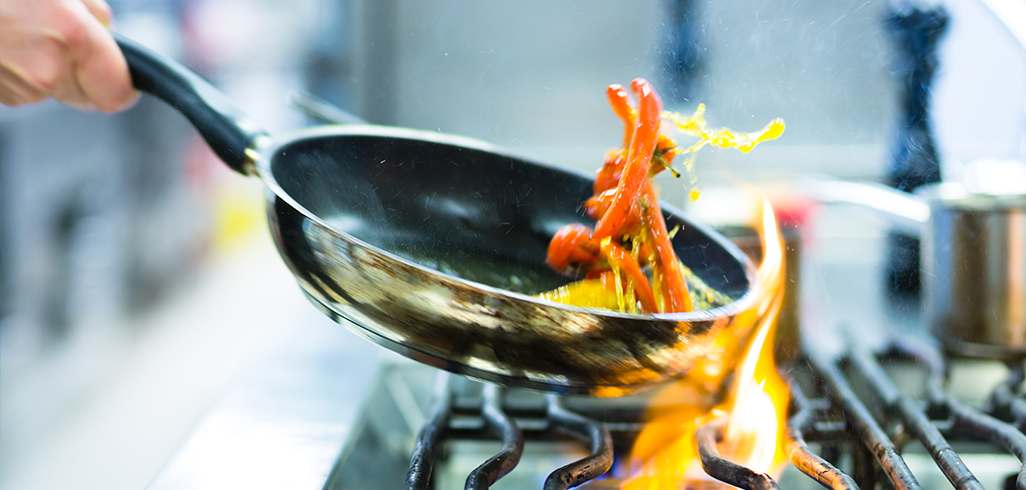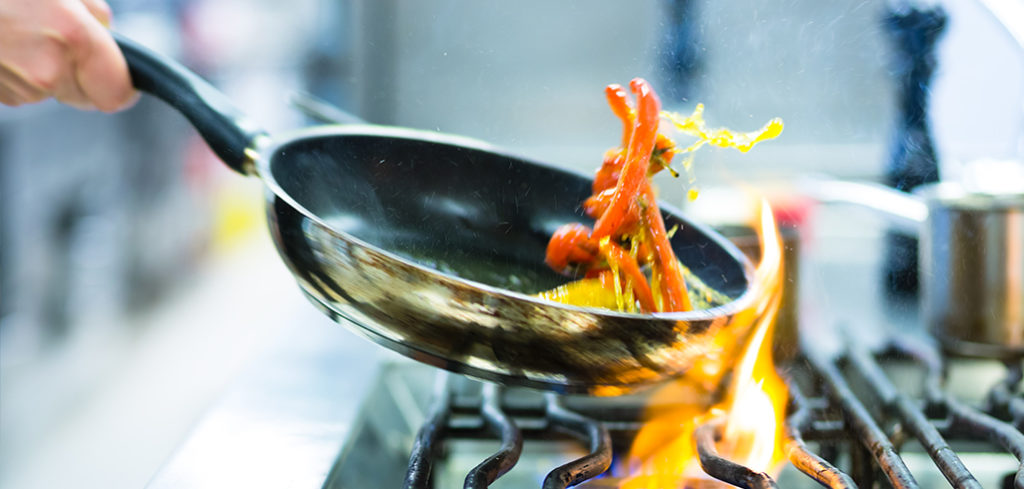 Posted on
Posted on

Applying high temperatures in food processing is a common form of preparation, as well as an effective preventative measure against harmful pathogens. However, heat can also dramatically change both the texture and flavor of food, which can alter a dish, whether it’s for better or worse.
Here are some of the basic reactions that occur when heat is applied to different foods.
Proteins
Proteins present in plant and animal-based foods coagulate when heated. Proteins are long molecules, but when heat is applied, they start to break apart and lose moisture. This is why high protein foods shrink when cooked and why eggs can be served as a semi-liquid or solid.
Coagulation begins at 140° F.
Starches
Starch is the most common carbohydrate in human diets, whether it’s natural or is added to foods. As heat is applied to starch it absorbs moisture from its surroundings and becomes softer. This process is called gelatinization and is the reason pasta and rice double in size and soften when cooked.
Gelatinization begins at 150° F.
Sugars
When sugar is heated, whether it’s added or naturally in foods, it becomes brown and changes dramatically in flavor. This popular process is called caramelization, and it’s responsible for flavors we associate with cooking and baking. Caramelization occurs at higher temperatures which is why foods only brown when using dry heat methods.
Caramelization begins at 338° F.
Water
The evaporation of water is one of the most common, yet most underrated processes in cooking. When water molecules within the food are brought to a boil, they begin to move faster and faster until they change to gas (steam) and evaporate. Since water is present in many foods, evaporation that occurs as food is cooked or heated causes the food to dry out.
Evaporation begins at 212° F.
Fats
When heat is applied to fats, they melt, rather than evaporate or solidify. Fats can take the form of a solid, liquid, or a variation of both. However, they all become liquid when heated. Fats are used as a medium for cooking and baking because they are less likely to burn than other substances.
Melting temperature depends on the fat.
Heat is one of the most crucial scientific reactions that occur while cooking, and it can greatly affect the taste, texture, and consistency of food. Because most foods are composed of a variety of these substances, multiple variations of these reactions can occur simultaneously, making the ability to monitor and adjust applied heat crucial to food quality.
MadgeTech offers a variety of data loggers that offer real-time monitoring, alarms, and notifications that allow critical control points to be continuously managed. With MadgeTech’s variety of food processing data loggers, you can ensure that you achieve the highest quality every step along the way.
For more information about the benefits of MadgeTech data loggers or to find the right system for your application, call us at (603) 456-2011 or email [email protected].






